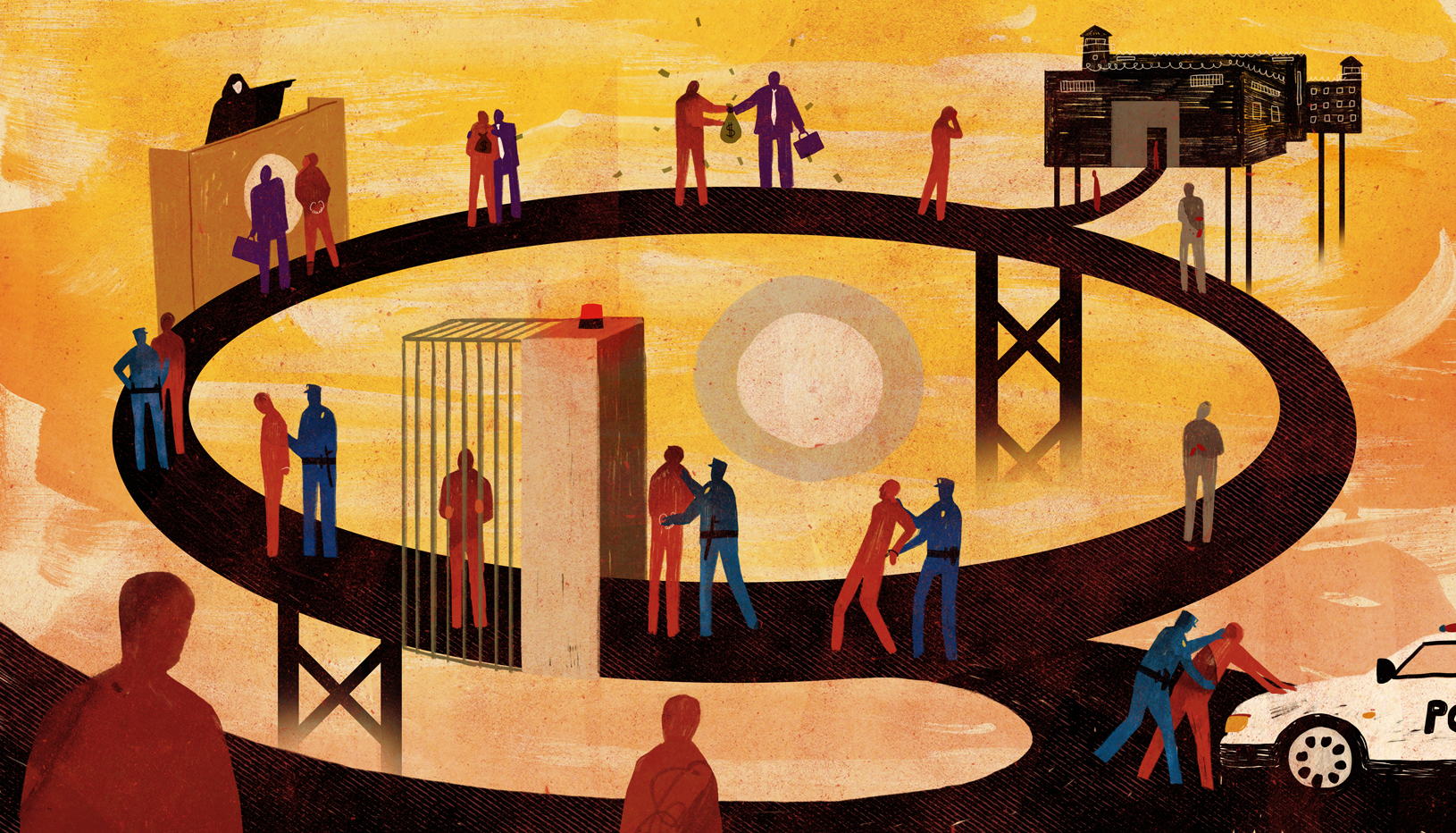A new Brennan Center study of recent trends and persistent racial disparities in New York City’s misdemeanor enforcement system showcases the benefits of taking an inclusive approach to criminal justice research and policymaking. In addition to examining court data between 2016 and 2022, researchers conducted in-depth qualitative engagements with 166 stakeholders, including law enforcement and impacted Black and Latino community leaders, to understand the context behind the numbers. Working with people impacted by the criminal justice system as collaborators and integrating their expertise throughout the research process strengthened our data analysis and allowed us to craft actionable recommendations for improving approaches to minor offenses.
Although these practices have long been used in fields like public health, education, and democracy, inclusive research approaches have now expanded to criminal justice, specifically to address the structural factors that drive racial disparities in the criminal justice system. These are also known as community-engaged research or participatory action research. For example, recent studies about youth gun culture, prosecutorial reforms, and prisons engage community members with lived experience as fellow experts to collaboratively conduct research and develop recommendations. In contrast, traditional research methods have historically treated marginalized groups, including justice-involved people, as subjects in need of intervention. This has also led to the exploitation of community knowledge — where members are too often pathologized — without accountability and transparency from research institutions.
In studying minor offenses, Brennan Center researchers adopted three core inclusive research strategies. First, we worked to forge connections with a wide range of key stakeholders, especially community leaders most impacted by the justice system who are typically excluded from research. Strong relationships cannot be formed overnight. Rather, community partnerships require long-term and sustained efforts in active listening, transparency, and mutual exchange. To develop our skills, we facilitated ongoing trainings and debriefs on qualitative interviewing and analysis, cultural humility, community engagement, and research accountability practices. These tools allowed us to grapple with the responsibility and privilege of being outside researchers invited into programs and communities. They also ensured that we were able to accurately capture stakeholders’ experiences and recommendations.
Second, participants were compensated for their time and expertise — a core principle of this research approach. This builds on a standard research practice that enjoins researchers to reimburse people for any significant study contributions, including feedback from subject matter experts. Impacted community leaders are no exception. We also accommodated individuals’ needs and preferences in study participation, such as arranging virtual or in-person discussions and scheduling to accommodate work, childcare, and other commitments. Additionally, host organizations received compensation for recruitment and meeting spaces used for qualitative engagement. Showing stakeholders that they are valued facilitates participation and stronger partnerships with community experts.
Finally, as a critical part of the methodology, some community stakeholders reviewed the quantitative data to help researchers understand the experiences behind the numbers. Resulting themes identified by stakeholders support growing research that highlights how structural factors like housing instability, poorer health, and lack of economic opportunity — referred to as the social determinants of justice — are likely what drive interactions with New York City’s minor offense system.
Participants also recommended solutions to tackle some of these factors. As highlighted in an accompanying Brennan Center resource, these included better addressing structural needs related to health and housing, such as specialized court diversion programs (e.g., for mental health and substance use), alternative responses for behavioral health crises, more supportive housing for justice-involved people, and community-led prevention models. Of note, researchers found common ground across community, nonprofit, and government stakeholders in expanding solutions that more substantively address community safety. A common frustration among community leaders is how government officials and nonprofits do not consult people most impacted by the justice system when developing and implementing programs and policy reforms, despite their proximity to and knowledge of the issues in their communities.
Adopting an inclusive research approach with a wide range of stakeholders, especially with members of impacted communities, led to more robust findings. However, challenges remain in applying the approach more broadly. Inclusive research requires significant time and resources to build trusting relationships with community-based partners. Furthermore, the location of research, whether courts, jails, or prisons, may be challenging for this approach. That is because security mandates, restrictive conditions, and intense surveillance are obstacles to ensuring confidentiality.
While not all studies may be able to implement a full participatory methodology, it is important, nonetheless, to grow organizational capacity for inclusive research approaches. Maintaining long-term relationships with community partners and incorporating community-informed analyses, for example, can be a boon in better ensuring that communities are connected, represented, and invested in the research. We recommend that such approaches be more widely adopted in criminal justice policymaking and research in the future.











